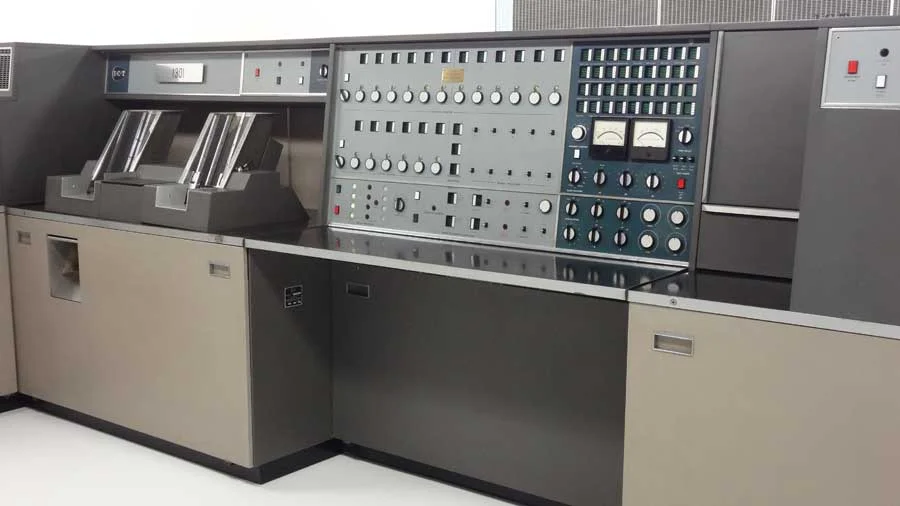An ICT 1301, also known as Flossie, one of the first mass-produced British business computers, has been rescued from the scrapheap for the third time in its 50-year history and is currently in storage at TNMOC waiting for the time when we are in a position to get it restored and working again. There are no timescales for this as there are a number of logistical steps to overcome, the main one being an area big enough to display it. It is not currently viewable by the public.
Image suplied By Robocomm - Own work, CC BY-SA 3.0
Built in 1962 by the company that was later to become ICT (International Computers and Tabulators), Flossie was the first of more than 150 ICT 1301s that were delivered for use in commercial and public organisations. They were used by a wide range of organisations including insurance companies, Selfridges, and the Milk Marketing Board.
Thanks to their stunning design, some ICT 1301s took on another role in the 1970s and 1980s. They will be familiar to many film buffs, having appeared in the James Bond film, The Man with the Golden Gun, Blake's 7, The Pink Panther, and Doctor Who.
The ICT 1301 being stored at TNMOC was used in Senate House at the University of London for general accounting, administration, and for the production of GCE examination results for candidates in England and Wales.
Rod Brown with Flossie in Kent. Photo copyright bnps.co.uk
Weighing 5.5 tons and with a footprint of about 6 metres by 7 metres, Flossie was decommissioned at the University of London in about 1972 and was purchased at scrap metal prices by a group of students who ran an accounting bureau for about five years. They then advertised it in Amateur Computer Club Magazine and it was bought, again at scrap metal value. After languishing for a period in a barn in Kent, it was restored with the help of the Computer Conservation Society. In 2012, Flossie was again at risk of being scrapped, but the machine has been given a new home at TNMOC.
Only three other ICT 1301s are known to have survived, but Flossie is the only one ever likely to work again. The restoration team is looking forward to the day that it can go back on display.
The machines designer also took the work of A.D.Booth of Birkbeck Collage and produced the HEC1 computer which was a precursor to the 1301 design and that machine is also on public view at the TNMOC.





